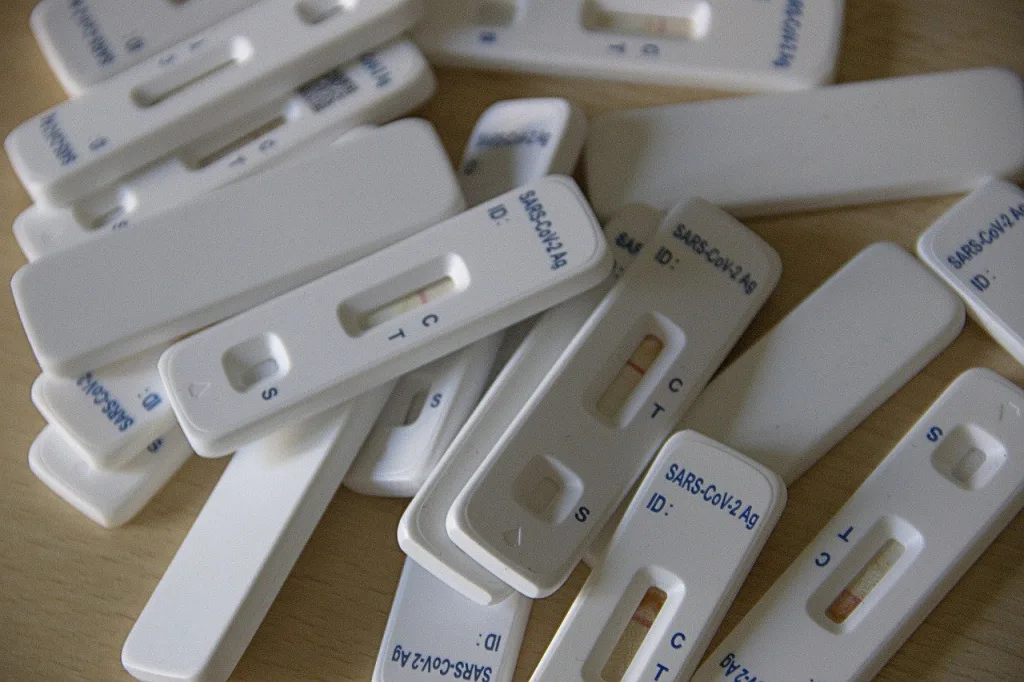Diagnosis and Testing
Types of HIV Tests
Understanding the various types of HIV tests is essential for effective diagnosis and management of the virus. HIV testing is the cornerstone of public health strategies aimed at controlling the spread of this infection and providing individuals with the necessary information to make informed decisions about their health. The tests available can be categorized into several types, each with unique methodologies and timelines for detecting the presence of the virus or the body’s immune response to it.

The most common type of HIV test is the antibody test, which detects antibodies produced by the body in response to HIV infection. These tests can be performed on blood or oral fluid samples. Antibody tests are typically reliable, but they may take longer to show positive results following exposure, as it can take weeks to months for the body to produce detectable levels of antibodies. Rapid antibody tests, which can provide results in as little as 20 minutes, have become popular in various settings, including community health centers and outreach programs, allowing for immediate knowledge of one’s HIV status.
Another significant category of HIV testing is the antigen/antibody test, which detects both HIV antibodies and antigens—substances that the body produces in response to the virus. This type of test can identify HIV earlier than antibody tests alone, as antigens can be present in the blood within days of infection. Typically performed in laboratories, these tests can provide results within a few days and are crucial for early detection, which is vital for effective treatment and reducing the risk of transmission to others.
Nucleic Acid Tests (NAT) represent the third type of HIV testing and are used to detect the actual virus in the blood. This test is highly sensitive and can identify HIV infection as soon as 10 to 14 days after exposure, making it the most effective option for early detection. However, NAT is more expensive than other testing methods and is usually reserved for individuals who have had a recent exposure or have symptoms indicative of acute HIV infection. The ability to detect the virus at such an early stage can significantly impact clinical management and care strategies.
In addition to the standard testing methods, at-home HIV testing kits have gained popularity, allowing individuals to test themselves in the privacy of their own homes. These kits typically utilize either antibody or antigen/antibody testing methods and provide results within a short timeframe. While at-home tests increase accessibility and privacy, it is crucial for individuals to follow up with healthcare providers for confirmatory testing and counseling if results are positive. By understanding the different types of HIV tests available, individuals can better navigate their healthcare options and contribute to broader public health goals related to HIV prevention and treatment.
Understanding Test Results
Understanding test results is a fundamental aspect of navigating the complex landscape of HIV and AIDS. For individuals diagnosed with HIV, as well as those at risk or involved in care, interpreting test results accurately can significantly influence decision-making processes and health outcomes. This section aims to demystify the various tests associated with HIV, explain what the results mean, and highlight the importance of follow-up actions based on these results.

HIV testing involves several types of assessments, including antibody tests, antigen tests, and viral load tests. Antibody tests seek to identify the presence of antibodies produced in response to HIV infection, while antigen tests can detect the virus itself. Viral load tests measure the amount of HIV in the blood, providing crucial information about the level of infection and the effectiveness of treatment. Understanding the differences between these tests is vital, as each serves a unique purpose in managing health and guiding treatment strategies.
Test results can be categorized into several key outcomes: negative, positive, and indeterminate. A negative result generally indicates that no HIV infection is present, but it is important to consider the timing of the test in relation to potential exposure. A positive result confirms the presence of HIV, which necessitates further discussion about treatment options and lifestyle adjustments. Indeterminate results can arise from various factors, including recent exposure or technical issues, and often require retesting to clarify the status of infection. Each scenario underscores the need for accurate interpretation and professional guidance.
The implications of test results extend far beyond a simple positive or negative outcome. For those living with HIV, understanding the viral load is crucial for monitoring the effectiveness of antiretroviral therapy (ART). A suppressed viral load signifies that the virus is under control, significantly reducing the risk of transmission and improving overall health. Conversely, an unsuppressed viral load may indicate the need for changes in treatment or adherence strategies. Therefore, continuous monitoring and open communication with healthcare providers are essential to maintain optimal health and prevent complications.
Finally, emotional responses to test results can vary widely among individuals, making it imperative to address the psychological aspects of receiving such information. Support systems, including counseling, peer support groups, and educational resources, play a critical role in helping individuals process their results and make informed decisions regarding their health. By fostering an environment of understanding and support, individuals can navigate the complexities of living with HIV and make empowered choices about their care and treatment.
Importance of Early Diagnosis
The importance of early diagnosis in the context of HIV and AIDS cannot be overstated. Early detection of HIV infection significantly enhances the effectiveness of treatment, improves health outcomes, and reduces the risk of transmission to others. When individuals are diagnosed at an early stage, they have a greater opportunity to engage in care and initiate antiretroviral therapy (ART) promptly. This not only helps to maintain their immune function but also reduces the viral load to undetectable levels, making it nearly impossible for them to transmit the virus to sexual partners, a concept often referred to as “U=U” (Undetectable = Untransmittable).
Furthermore, early diagnosis plays a critical role in public health strategies aimed at controlling the HIV epidemic. When individuals are aware of their HIV status, they are more likely to adopt safer behaviors and seek regular medical care. This proactive approach not only benefits the individual but also contributes to the overall reduction of new infections within the community. By identifying and treating HIV-positive individuals as early as possible, public health officials can better allocate resources, implement effective prevention strategies, and ultimately work towards ending the epidemic.
In addition to the health benefits, early diagnosis can also alleviate some of the psychological burdens associated with living with HIV. Many individuals experience anxiety, fear, and stigma related to their HIV status. Receiving an early diagnosis allows for timely support and counseling, providing individuals with the tools they need to cope with their diagnosis and make informed decisions about their health. Mental health support is crucial, as it can improve adherence to treatment and enhance overall quality of life for those living with HIV.
Moreover, the advancements in HIV testing technologies have made it easier than ever to achieve early diagnosis. Rapid testing, self-testing kits, and routine screening in healthcare settings have expanded access to HIV testing. These innovations empower individuals to take charge of their health and seek testing without the barriers that may have existed in the past. Increased awareness and education about the importance of regular testing are essential in encouraging individuals to get tested, especially those in high-risk populations.
In conclusion, the significance of early diagnosis in the management and prevention of HIV cannot be ignored. It is a cornerstone of effective treatment and a vital component of public health efforts. By fostering an environment where testing is normalized and accessible, we can encourage individuals to take control of their health, reduce stigma, and move towards a future where new HIV infections are minimized. Ultimately, early diagnosis is not just about identifying the virus; it is about empowering individuals and communities to thrive in the face of HIV and AIDS.


No responses yet